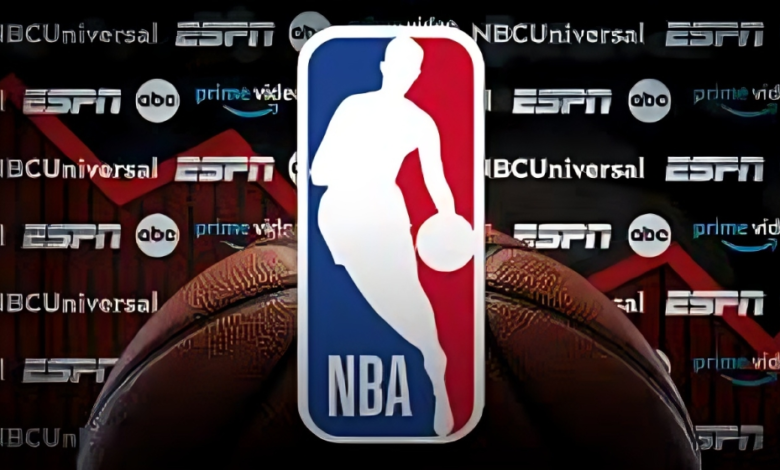Understanding NBA Ratings Factors Behind the Numbers and What They Mean

The NBA is one of the most popular and globally recognized sports leagues, with millions of fans tuning in to watch games throughout the season. From the intense rivalry of the playoffs to the action-packed moments of regular-season games, basketball captivates audiences around the world. One of the key aspects that reflect the NBA’s widespread appeal is the league’s ratings, which are an essential indicator of how many people are watching the games. But what exactly are NBA ratings, and how do they impact the league and its players? In this article, we will delve into the factors behind NBA ratings, their significance, and how they influence the sport’s landscape.
What Are NBA Ratings?
NBA ratings refer to the viewership numbers that indicate how many people are watching a particular game or the NBA as a whole. Ratings are typically measured through television viewership and digital platforms such as streaming services. The higher the ratings, the greater the number of viewers watching the games, which in turn signifies the popularity and widespread interest in the league.
These ratings can be broken down into various categories, such as:
- National TV Ratings: These ratings measure the number of viewers watching NBA games broadcasted on national television networks such as ESPN, ABC, TNT, and NBA TV.
- Regional TV Ratings: These ratings assess viewership within specific geographic regions, often based on local television broadcasts of team games.
- Streaming and Online Ratings: With the advent of online streaming platforms like NBA League Pass, YouTube, and social media platforms, ratings are now also tracked digitally. This includes views on digital streaming services and social media platforms such as Facebook, Twitter, and Instagram.
- Playoffs and Finals Ratings: The NBA playoffs and Finals, which are the climax of the season, often see higher ratings due to the excitement and drama of the games. These ratings are closely watched by teams, sponsors, and advertisers.
Factors That Influence NBA Ratings
Several factors play a role in determining the NBA’s ratings. These factors can fluctuate from season to season and even from game to game. Some of the most significant factors include:
1. Star Power and Player Popularity
One of the most significant drivers of NBA ratings is the presence of star players. Superstars like LeBron James, Stephen Curry, Kevin Durant, and Giannis Antetokounmpo bring with them large fan followings, and games featuring these players tend to attract more viewers. Their on-court performances, personalities, and off-court endeavors often generate media buzz, which translates into higher ratings.
The NBA’s popularity is closely linked to its stars. For instance, the rivalry between LeBron James and Stephen Curry has been a major storyline in recent years, contributing to significant increases in viewership. When these players meet in the Finals or during high-stakes games, their fanbases flock to television screens and digital platforms, pushing ratings higher.
2. Team Rivalries and Storylines
Beyond individual stars, the NBA also thrives on team rivalries and compelling storylines. Historical rivalries, such as the Boston Celtics vs. the Los Angeles Lakers or the Golden State Warriors vs. the Cleveland Cavaliers, have consistently drawn higher ratings due to their established legacies.
Emerging rivalries between teams, such as the Brooklyn Nets vs. the Milwaukee Bucks, also create intense anticipation among fans. The dramatic arcs of a team’s journey, the rise of underdogs, and unexpected twists during the season further fuel interest in the league.
3. Playoff and Finals Matchups
Playoff games, especially the NBA Finals, typically see the highest ratings each season. The competition for the championship brings together the league’s best teams, and fans know they will witness the most thrilling games. The matchup between two marquee teams or star players can lead to even higher viewership. For example, the 2016 NBA Finals between the Cleveland Cavaliers and Golden State Warriors, which included a historic comeback by the Cavaliers, achieved record-breaking ratings.
The NBA Finals, in particular, are a massive television event that extends beyond basketball fans. Advertisers and sponsors heavily invest in the Finals due to the enormous audience it attracts, making the games a prime spot for commercial advertisement.
4. Schedule and Timing
The timing of games can also affect ratings. Games scheduled during prime-time hours, particularly in the evening when most people are home from work or school, tend to attract higher ratings. Games played on weekends also tend to see better viewership compared to those during weekdays when viewers may be occupied with work or other commitments.
The NBA’s scheduling of marquee matchups, especially on holidays such as Christmas or Thanksgiving, often sees higher ratings. These games typically involve teams with national appeal or star players, which also boosts viewership.
5. Global Appeal and International Players
The NBA is known for its global appeal, with fans across the world watching the games. International players such as Giannis Antetokounmpo, Luka Dončić, and Nikola Jokić have expanded the NBA’s fan base beyond the United States, increasing ratings in international markets.
The NBA’s efforts to market the league globally, such as hosting games overseas and promoting international stars, have led to increased viewership from regions like Europe, Asia, and Africa. This international aspect of the NBA significantly boosts its overall ratings, especially during high-profile events like the NBA Finals or international games.
6. Media Coverage and Promotion
The amount of media coverage and promotional activity surrounding the NBA also plays a major role in determining ratings. Extensive coverage on television networks, social media, websites, and sports news outlets ensures that fans are aware of game times, player performances, and major storylines.
Promotions, advertisements, and sponsorships targeting various demographic groups also drive interest in NBA games. The NBA’s social media platforms have become a key tool for fan engagement, with game highlights, behind-the-scenes content, and interactive elements helping to create a buzz and attract viewers.
7. Competition from Other Sports and Entertainment
While the NBA enjoys widespread popularity, it must compete with other major sports leagues and entertainment options for viewers’ attention. During the NBA season, the league competes against NFL football, NHL hockey, college basketball, and major events such as the World Series and the Olympics. The ratings for NBA games may dip if there is significant competition from these other sports or highly anticipated entertainment events.
For instance, the NFL’s popularity and the Super Bowl often draw attention away from the NBA during the winter months. However, the NBA’s ability to maintain strong ratings despite such competition is a testament to the sport’s resilience and global fanbase.
Why Are NBA Ratings Important?
NBA ratings are a critical metric for the league and its stakeholders. High ratings translate into more significant revenue from broadcasting rights, advertising deals, and sponsorships. Television networks that air NBA games use ratings to negotiate better contracts with the league, and advertisers rely on ratings to determine how much to pay for commercial time during games. The higher the ratings, the more valuable these broadcast rights and commercial deals become.
Ratings also serve as an indicator of the NBA’s popularity and cultural influence. When the NBA experiences a surge in viewership, it indicates that the league is thriving, which in turn attracts new sponsors, fans, and investments. High ratings can even spark discussions about expanding the league or introducing new teams, as well as boosting the profiles of players and franchises.
For players, high ratings can translate into increased endorsements, larger social media followings, and greater marketability. Players with higher exposure through national and global broadcasts are more likely to secure lucrative endorsement deals from major brands.
Conclusion
NBA ratings are a valuable reflection of the sport’s appeal, with factors such as star power, team rivalries, global reach, and media promotion influencing viewership numbers. As the NBA continues to evolve, its ratings will remain a crucial metric for understanding its success and growth. For fans, the ratings provide a snapshot of how popular the games are and can give insight into which players, teams, and moments are capturing the most attention. Whether it’s a regular-season game or a thrilling playoff matchup, the ratings help us understand just how much the NBA is capturing the hearts and minds of basketball fans around the world.



